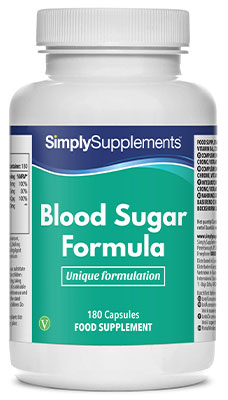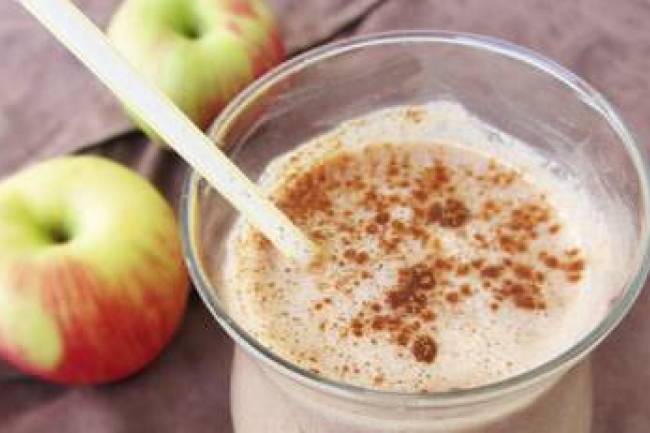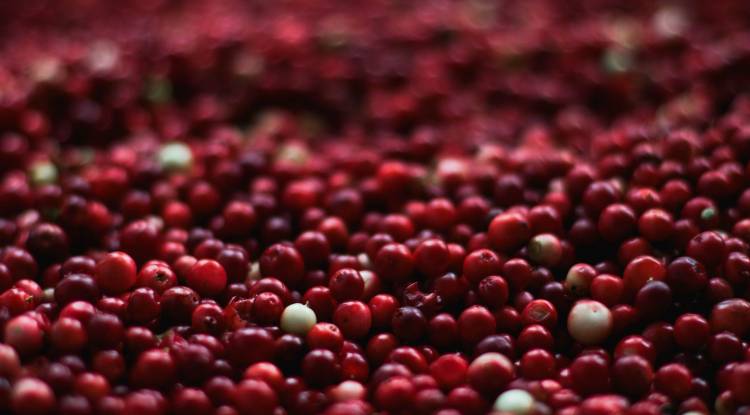Fructose and Diabetes: What is the Link?

There has been a lot of recent discussion regarding the link between sugar and diabetes, with fructose in particular being singled out. As a result, in this article we'll investigate the links between fructose and metabolic conditions such as diabetes, allowing you to better understand the problem and the best ways to keep yourself healthy.
What is Fructose?
Fructose is a monosaccharide (single sugar) that is found in fruits and some vegetables. However, it is also found in sucrose – better known as table sugar.
Fructose is also found in large concentrations in high fructose corn syrup, a highly processed sweetening agent used in many western countries. Consequently, the majority of dietary fructose comes not from fruit and vegetables but from added sugars, which provide substantial calories, whilst being totally devoid of nutrients.
As with many topics in nutritional science it can be difficult to conclusively answer whether fructose is good or bad for your health. Let's examine the evidence from both camps, allowing us to make some more informed decision about the likely impacts of a high-fructose diet.
The Argument That Fructose Is Benign
Fructose has quite a low glycaemic index, meaning that it does not rapidly increase blood glucose levels compared to other sugars. Moreover, as it is sweeter than glucose, less of it is required to have the desired effect. For this reason it was once thought that fructose represented a valuable sweetening agent to replace other sugars, especially for diabetics.
The Argument That Fructose Is Harmful
Sadly, the basic biochemistry discussed above doesn't paint the whole picture. There is growing evidence to suggest that an excessive fructose intake has the potential to negatively impact metabolic health in a number of ways.
Appetite
It is well documented that a hormone called leptin is released by the body when insulin levels are high.
Leptin, which is stored in fat cells, can be thought of as like a thermostat for the body. When leptin levels are low (indicating lower body fat), we become hungrier and eat more. Conversely, when leptin levels are high (indicating higher body fat) we don't feel as hungry, therefore we eat less.
Sadly, the minimal insulin increase caused by the consumption of fructose can therefore suppress leptin levels, encouraging us to consume more calories.
This viewpoint is further supported by evidence suggesting that around 90% of Type 2 diabetics are either overweight or obese. Although there are numerous other ways to maintain a healthy appetite, it is fair to assume that cutting out added sugars (that are high in fructose) can be very beneficial.
Although it would be premature to suggest that fructose has a causal role in the obesity pandemic, scientists note how the rise in fructose consumption mirrors the rise in obesity rates over the last few decades.
Fructose and the Liver
An even bigger problem with excess fructose is how it is metabolised. Unlike glucose, which can be used by every cell of your body for energy, fructose can only be metabolised by the liver.
The rise of added sugar in the typical western diet in recent decades has led to a massive increase in the amount of fructose we consume. Not only this, but some food items like fizzy drinks have also increased the speed at which fructose gets into the system, putting further strain on the liver.
It gets worse. In those who have a chronically high intake of fructose, the body actually adapts by digesting and absorbing fructose more efficiently, which can cause more issues.
Your body has the capacity to store sugars in the form of glycogen, with around 400g being stored in the muscles, and around 100g in the liver. Once the liver is saturated with glycogen, any excess sugar is turned into fat that is either stored in the liver, or is transported away in the form of triglycerides. And by the way, high triglycerides levels are a risk factor for developing heart disease.
The creation of fat from carbohydrates is something known to scientists as de novo lipogenesis, or DNL for short. As this process happens in the liver, it should come as no surprise that a high fructose intake can lead to an increase in liver fat (hepatic steatosis).
Once fat in the liver exceeds 5% of its total mass, a physician will give the diagnosis of non-alcoholic fatty liver disease (NAFLD). Alarmingly, recent scientific evidence has estimated that NAFLD affects a quarter of the world's adult population. This condition not only increases the risk of heart disease but a whole host of metabolic diseases such as type 2 diabetes.
The link between NAFLD and type 2 diabetes is due to insulin resistance. Research has shown that the higher the amount of fat in the liver, the more insulin is needed to shuttle glucose in. Because of this, the pancreas has to work harder to create more insulin and higher insulin results in a greater resistance.
This is a vicious cycle which can continue for years until the pancreas fails, as it is simply unable to meet the demands for insulin anymore. Inevitably, this leads to blood sugar levels sky rocketing. In short, when liver homeostasis is disrupted, so too is metabolic health.
How to Spot NAFLD
As NAFLD can precede diabetes and other metabolic complications by numerous years, it is important to tackle this issue to regain control of your health. Unfortunately, as we discovered earlier, a significant proportion of adults are walking round with a fatty liver, and most don't even know it. This is one of the reasons why Type 2 diabetes is predicted to affect 642 million people within a generation.
One tell-tale sign of NAFLD is ‘central obesity' that is characterised by a large waist circumference. Interestingly, waist circumference is now seen as a more valid indicator of metabolic health than body mass index (BMI). This is for a couple of reasons. Firstly, BMI only accounts for mass, and doesn't differentiate between lean mass and fat mass.
More importantly, two people with the same BMI could have very different metabolic profiles due to where they store their fat. Subcutaneous fat (fat under the skin), although cosmetically unpleasant, has a surprisingly innocuous effect on metabolic health.
The same cannot be said for visceral fat that cakes organs such as the liver and pancreas. Measuring your waist circumference provides a clearer indication of the level of visceral fat, and therefore metabolic health, when compared to BMI.
As we touched on earlier, 90% of those with type 2 diabetes are classed as overweight or obese. But what about the other 10%? Unfortunately for these individuals, the relatively small amount of fat that they store is mostly found around the organs, which is a key contributing factor.
So then, what defines a healthy waist circumference that we should all be aiming for? The Dieticians of Canada recommend that men should aim for below 36inches (90cm) and women fewer than 32 inches (80cm). Anything above these measurements is classed as ‘central obesity' and sets people up for numerous health issues.
Other Health Complications from a High Fructose Intake
While metabolic disease is arguably the most pressing health condition linked to excessive fructose intake it is far from the only potential complication.
Studies have shown that ingesting large amounts of fructose in the form of fizzy drinks can rapidly increase the amount of uric acid in the blood. Uric acid is a substance that triggers the formation of painful crystals within the joints – a condition known as gout.
Shockingly, research from 2008 showed that men who consumed two sugar sweetened drinks per day were 85% more likely to develop gout than those who consumed the same amount but over the period of a month.
We have already discussed how excessive fructose intake increases liver fat and blood triglyceride levels. However, high amounts of dietary fructose can also increase the production of free radicals; harmful molecules that contribute to the ‘oxidative stress' on the cells which can cause inflammation, damage and premature aging.
Is Fruit Bad for Me?
We've seen that fruit is high in fructose, and that fructose is linked to type 2 diabetes and other metabolic conditions. So the obvious question is whether fruit is actually bad for you?
Fortunately, as most fruit is high in fibre, this results in a steady influx of natural fructose to the liver – a situation that is manageable. Moreover, fruit contains vitamins, minerals and polyphenolic compounds which make it a healthy addition to the diet.
A century ago, the average person was consuming 15-25g of fructose per day, with most, if not all, coming from natural sources such as fruit. Fast forward to the present day and the average fructose intake is approaching 60g per day, with adolescents consuming over 72g per day. Alarmingly, fructose is contributing over 10% of daily calories!
As you can imagine fruit is not contributing much to this excessive intake. The vast majority of fructose consumed is due to added sugars present in ready meals, snacks and sweetened beverages that are high in energy but provide minimal essential nutrients. This is the problem, not fruit.
To provide some perspective, a 500ml bottle of Coke original contains 53g of sugar. As half of sugar is fructose, there is 26.5g of fructose per bottle. When you think of this in the context of a traditional western diet which comprises of many processed goods it is not difficult to see how the average person is consuming 60g per day.
To provide a comparison to the bottle of cola, you would have to consume roughly 3 large apples, 5 small bananas, 500g of cherries or a kilo of strawberries to obtain the same amount of fructose. Again, fruit is not the problem and is certainly part of a healthy diet.
That being said, the type and form of fruit does have a bearing on the impact it has on the body. Dried fruit and fruit juice provides significantly more fructose and less fibre than whole fruit by comparison. This is one reason why the Department of Health recommend no more than 150ml of fresh fruit juice per day.
So, if you are worried about your fructose intake, it goes without saying that added sugars should be heavily controlled. You may also want to avoid dried fruit and fruit juice, and just focus on consuming whole fruit.
Summary
Hopefully this article has raised awareness about the potentially harmful effect of excessive fructose intake and has encouraged you to consider the amount that you consume each day.
Like most topics in nutrition, a focus on mainly eating whole, unprocessed foods and limiting the items which are detrimental to our waistlines and metabolic health is the safest route forward.
Sources:
https://academic.oup.com/jcem/article/89/6/2963/2870348
https://academic.oup.com/ajcn/article/88/5/1189/4649075
https://www.ncbi.nlm.nih.gov/pmc/articles/PMC2714385/
https://www.healthline.com/nutrition/why-is-fructose-bad-for-you#section3
https://www.healthline.com/nutrition/why-high-fructose-corn-syrup-is-bad#section2
https://www.ncbi.nlm.nih.gov/pubmed/22952180
https://www.ncbi.nlm.nih.gov/pubmed/26707365/
https://www.sciencedirect.com/science/article/pii/S0168827808001645
https://www.ncbi.nlm.nih.gov/pmc/articles/PMC5663253/
https://www.ncbi.nlm.nih.gov/pmc/articles/PMC4405411/
https://www.diabetes.ca/diabetes-and-you/healthy-living-resources/weight-management/waist-circumference
https://www.ncbi.nlm.nih.gov/pmc/articles/PMC2234536/
https://www.ncbi.nlm.nih.gov/pubmed/18769702

 Matt
Matt 
























